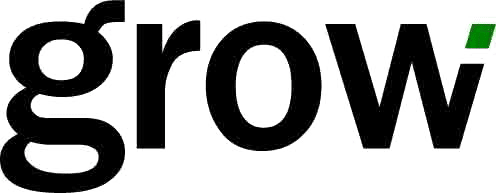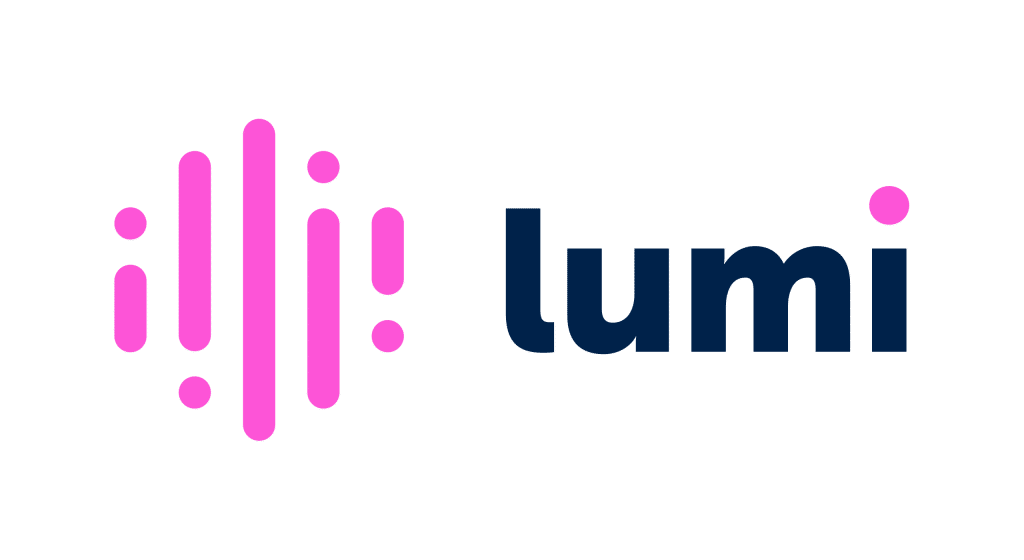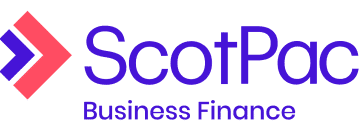Home > Business Loans > Business Loan Repayment Calculator
Business Loan Repayment Calculator
Work out how much your preferred business loan will cost overall with Savvy’s simple calculator today.
Author
Savvy Editorial TeamFact checked








Calculate your business loan repayments
Taking out a loan to help your business cover its expenses is often a highly useful way to manage your debts. It’s important to know what each loan may end up costing in the long-term, though, which is why you can use Savvy’s business loan calculator to give yourself a better idea of what you might pay for financing.
Types of business loan
The most common type of business finance, unsecured loans enable businesses to access the funds they need without attaching an asset to the loan as security. Some lenders may allow you to borrow up to $500,000 and, because there's no collateral, offer same-day approval.
If your business already owns valuable assets, such as property or expensive equipment, you may choose a secured business loan instead. These loans may increase your borrowing power beyond what an unsecured loan can offer and, crucially, typically come with lower interest rates.
Business loans don't always have to be worth hundreds of thousands. If you're operating a small business and need a boost to help you keep on top of your expenses or expand your company, you may be able to take out a loan starting from as little as $5,000 and unlock further capital.
Just because you don't have all the required documents for a standard business loan doesn't mean you're out of options. Low doc finance enables you to use alternative documentation, such as other business financials, in the application process to access the funds you need.
A commercial line of credit allows you to draw from your loan account whenever your business needs access to their funds, instead of managing a lump sum and repaying it like a regular loan. This can add flexibility to your finance arrangement, providing money when you need it.
Invoice finance presents another option to business operators looking to free up cash through outstanding invoices yet to be paid by their customers. Your invoice finance can either be invoice discounting or factoring, which present different options when it comes to your invoices.
A common reason for seeking out a loan is to purchase commercial equipment. You can do this either with an unsecured arrangement or one with the equipment itself as collateral, with the latter potentially increasing your borrowing power and lowering your interest rate.
With this finance, when your business purchases product, your supplier provides an invoice which you send to your financier and pledge to repay by a set date. From there, your supplier sells the invoice to your financier at a discounted rate, while you repay the full amount to your financier.
Under an inventory finance agreement, your lender pays your supplier directly for inventory, which allows it to be signed off and sent to you. From there, you can pay off your debt within a pre-determined period to your lender, which may be longer than the regular debtor period.
An overdraft facility is attached to an existing financial account belonging to your business, such as a transaction or savings account, and enables you to borrow up to a set limit after the account’s balance reaches zero. These overdrafts are repaid with interest, but only on what you use.
You may simply be in a position where your business needs a boost to its cash flow. If this is the case, there’s a range of stop-gap solutions which may be suitable for your situation, from standard unsecured loans to specialist cash flow loans, invoice finance or even an overdraft.
Why compare business loans through Savvy?
100% free service
It won't cost you a cent to compare a range of business loans through Savvy, enabling you to come back at any time.
Reputable lending partners
You can compare business loan offers through a range of trusted Australian lenders, giving you more confidence in the process.
Online comparison process
You can fill out our simple online form to generate business finance quotes tailored to your business' needs in minutes.
How to compare loans before using the business loan repayment calculator
Borrowing range
First and foremost, you should ensure the lenders you’re considering for your business’ loan offer the amount that you’re looking for. For example, there’s little point in spending time tossing up options for a $300,000 loan if one or more of the lenders you’re looking at cap their loans at $250,000.
This also applies at the other end of the scale, with some lenders enforcing a minimum of $10,000, which may not fit with what you need.
Loan terms
By that same measure, you should always keep an eye on the potential terms available for loan repayments when comparing your options. You shouldn’t sacrifice your business’ comfort in covering your loan, so it’s important to select lenders which offer your preferred terms.
Some will restrict their loans to only two to three years in length, while others will require at least six to 12 months as a minimum.
Interest rates and fees
You should also look to minimise the cost of your repayments wherever possible, which you can do by looking at their interest rates and fees. Rates are always prominently displayed, so it’s simple to compare them to one another, although it’s important to note you may not receive the lowest possible rate indicated on your loan offer. On top of this, charges such as establishment fees of 2% to 3% of your loan amount are also worth paying attention to.
Repayment flexibility
It’s important to leave the door open wherever possible to paying off your loan sooner than its scheduled end time, as your business’ revenues may increase over time to the point where it’s no longer necessary to stick to the minimum required payment for each instalment.
Many lenders will enable you to repay more than the required amount, which can help you shorten your loan term and reduce the interest you pay overall.
Consider your options with Savvy
Above all else, though, you should compare as many loans as thoroughly as you can. You can do this here with Savvy, as we’re partnered with a range of competitive and reputable lenders from around the country to deliver you the highest-quality comparisons for your business.
You can choose the best loan available to your business and head straight to your lender’s site to apply today.
More questions about business loans and our commercial loan calculator
Business loans are able to be approved within just one hour of having the application submitted and can be fully processed and funded within three. However, the time it takes to get approved will vary depending on the complexity of your application and the state of your business’ finances, as well as the particular lender you elect to go with.
No – as you can see in our commercial loan calculator, there’s no requirement for you to put forward a deposit as part of your business loan. There’s nothing stopping you from utilising some of your business’ available cashflow or savings towards whichever expenses need covering, though, which reduces the size of your loan and therefore the interest you’ll have to pay.
The key qualification criteria for businesses when seeking out finance revolve around the revenue they generate and their time in business. Your business can be approved for financing when turning over at least $5,000 per month, while you’ll generally need to have been operating for a minimum of six months. It’s important to note that lenders’ eligibility criteria can vary significantly, so you should always compare these before you apply.
The most prominent factor which can affect the cost of your small business loan is risk. Lenders set interest rates based on how comfortable they are that your business will be able to consistently support the loan’s repayments. This may be affected by variables such as its monthly revenue (and its overall consistency), time in business, trading history, credit score and revenue projections, among others.
The only documents required for most business loans, which is generally the case for those under $200,000 to $250,000, are:
- Photo ID
- Your business’ online banking information
- Your business’ ABN/ACN and GST registration
- Record of your business’ rent costs
For larger loans, you’ll need to supply business financials, which may include profit and loss statements, accounts receivable and payable, balance sheets and a business plan which projects revenue.
Yes – equipment finance is a type of secured business loan which uses the purchased asset, which may be machinery or anything else, as collateral for the loan. Because of this, it usually comes with lower interest rates than unsecured business loans. You can use Savvy’s equipment finance repayment calculator to work out the cost of taking out a similar loan and compare the difference between that and the small business loan repayment calculator on this page.
More on how to calculate your business loan repayments
How do I use the business loan calculator?
Our small business loan repayment calculator is very simple to use and highly effective. All you have to do is input your preferred loan amount, term and interest rate into the calculator and it’ll show you the overall interest you’ll be liable to pay and the total repayment figure at the end of your Australian business loan. You can also adjust the frequency of repayments to align with your business’ preferred cycle, which you can align with its rate of revenue generation.
The calculator is highly useful not only for providing an indication of the cost of your loan but also for allowing you to crunch the numbers on multiple loans. This enables you to compare different loan offers in the market more accurately, giving you more confidence around what sort of loan you might be signing up for. You might simply want to play around with different figures until you find one your business is most comfortable with, which is another great way to help you secure the best loan deal available for your business.
How do business loans work?
Business loans are a type of finance designed to be used by businesses for a wide range of purposes. Like most other loans, you’ll receive a lump sum upon having your application approved and signed off on by your lender and begin repaying your debt in instalments soon after with interest. Part of the appeal of these loans to business operators is that they can be used for just about any business purpose, with funds able to be distributed however the owner sees fit. This makes them highly useful, with many owner-operators using them to plug general financial gaps.
Additionally, you’re given the choice between unsecured and secured business loans. Unsecured loans are the most common for small businesses, as these are less likely to have the assets required to secure their loan. These are offered for as little as $5,000 up to a maximum of $500,000 in some cases and come with potential loan terms of between three months and five years. They’re more common and accessible in the market, so you may find they’re the better option for your business.
If you have the assets to use as security, though, you could opt for a secured business loan instead. These come with several key benefits, which lie primarily in their reduced interest rates and expanded borrowing power (which is because they’re considered safer by lenders). The amount you’re eligible to borrow will largely be informed by the value of the asset you’re utilising as collateral, as this will be used to recoup funds in the event your business is unable to support the loan repayments. You can borrow well above $1 million as a result, with potential terms of up to ten years.
How can I save money while repaying my business loan?
There are many ways you can go about reducing the cost of your business loan repayments, both in terms of your ongoing instalments and its overall cost across its term. It’s important to bear these in mind, as following some of these steps could make a significant difference to your business’ available funds once the loan is paid off. Some of the ways to go about reducing your loan’s cost include:
Choose a shorter loan term
As is the case with almost all loans, the shorter the repayment term, the less you’re likely to be required to pay in interest and fees. Loan debts which decrease at a faster rate will come with the bonus of reducing interest more quickly than a long-term loan would. For instance, a $30,000 loan at 5% p.a. over three years would cost $2,321 in interest, whereas the same loan over two years would only set you back $1,539, a saving of almost $800. It’s important to note, though, that shorter terms will result in higher repayments, which may not be an option if your business’ turnover can’t support it. It’s crucial above all else for your business to be generating enough revenue to comfortably support its repayments.
Make additional repayments
Most business loans come with the option to make additional payments above the minimum required amount per instalment. By paying above this level, you can reduce your loan term considerably and cut down on the interest and fees you may otherwise be required to pay. For example, a $50,000 loan at 5% p.a. over a term of three years would cost you $3,948 overall. However, by paying an extra $100 on top of its standard $346 weekly repayments, you’d save $932 for your business and trim its term by eight months. This can also reduce the instance of paying fees.
Put down a deposit (if possible)
Although you can borrow 100% or more of the value of your intended business purpose, paying some of your business’ savings towards a purchase can help you save. Many businesses wouldn’t be in a position to do this, but if yours is, it might be worth considering putting down a deposit and reducing your loan size (and the interest and fees you’ll pay as a result). As an example, instead of taking out a full $30,000 loan over two years at 6% p.a., you could put up $3,000 of your business’ cash reserve and save almost $200 overall. Every little bit can make a difference to your business.
Look for offers with low fees
Loan fees can be a substantial drain on your business’ funds, particularly with establishment fees of up to 3% of your total loan amount. While it may not seem like much, this charge on a relatively modest $50,000 business loan would cost $1,500. However, many lenders charge low or no establishment or annual fees, which could potentially help your business save thousands over the term of your repayment cycle.
Apply for a secured business loan
If your business has an asset which can be used as collateral for a loan, such as equity in a commercial property or expensive equipment such as machinery, a secured loan can give you access to finance at a lower overall cost. Because these loans are seen as safer from a lender’s perspective (given that there’s a tangible asset which can be used to recoup any potential lost funds), they typically come with lower interest rates and fees overall.
Are there other types of business finance to choose from?
Yes – you aren’t solely limited to standard business loans when seeking out finance for your business. There are other potential sources of funds which could be more useful or suitable for your business’ particular needs, so it’s important to explore your options before diving into the process:
Commercial line of credit or overdraft
A line of credit is a type of business finance whereby you’re approved for a certain limit and can withdraw funds up to that amount whenever you see fit. This avoids the burden of managing a lump sum over a long period, instead enabling you to withdraw, repay and withdraw again to suit your business’ needs. These arrangements typically come with higher rates and fees, however.
An overdraft facility is very similar to a line of credit in principle, except it’s attached to your business’ bank account and enables you to withdraw beyond $0. A factor which is also relevant is that overdrafts come without any set repayments, unlike loans and lines of credit, instead only requiring you to pay the interest charged each week, fortnight or month. Like lines of credit, though, added costs are generally quite high.
Inventory finance
Inventory finance is another type of finance agreement available to businesses who deal in selling stock. This allows them to have the cost of a supply order paid by a lender, thereby enabling them to receive their product and sell it before repaying the seller. This functions as a revolving line of credit which can be useful for businesses looking to cover short debtor periods, especially if it takes a considerable time to sell their product.
Invoice finance
If your business has outstanding invoices yet to be paid by your clients, you could look to invoice finance as a potential solution to release your funds. There are two types of invoice finance: invoice factoring and invoice discounting. The former allows you to sell your outstanding invoices to a third party for up to 90% to 95% of their value, after which they’ll pursue payment from your client directly and, once received, will pass on the remainder of its value minus fees. Invoice discounting is a line of credit secured by the value of your outstanding invoices which can help you access up to 90% of their value while still awaiting payment.
Bridging finance
Bridging finance is taken out by businesses who are in between qualifying for larger finance but need access to funds sooner. This is typically secured by an asset and enables you to borrow up to $1 million in some cases. This can be repaid over as little as two weeks up to 12 months. These loans often come with higher rates and fees than standard loans, however, so they may not be ideal if you simply need a loan detached from any larger finance application.
Helpful business loan guides
Still looking for the right finance for your business?
Explore a range of business loan options suitable to your financing needs and apply online through Savvy today.









